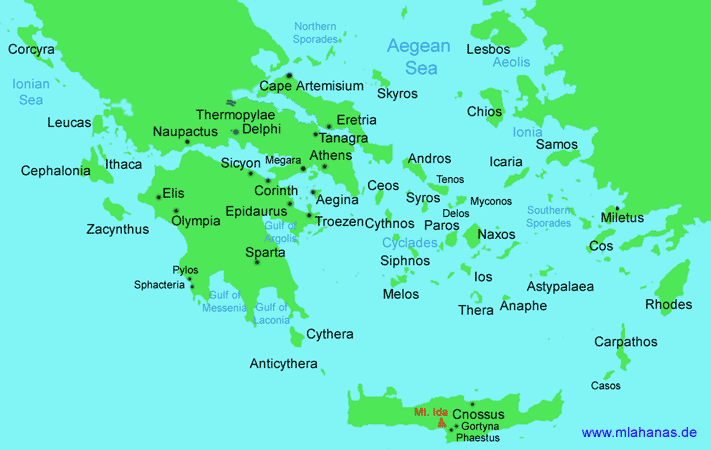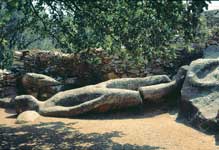|
|
Naxos is the largest island (428 km² ) in the Cyclades island group in the Aegean Sea, which separates Greece and Turkey. The island was the centre of archaic Cycladic culture, then part of classical Greek culture, and is part of modern Greece. It is a popular tourist destination, with easily accessible ruins. One set of ruins is what is left of a temple built on a rocky beach. Long ago there was an earthquake sending most of the temple into the sea. Still standing, however, are two columns with a single lintel across them. The remains of the structure resting in the sea can be seen from the shore and explored by swimmers. Mythic Naxos
Ariadne on Naxos , John Vanderlyn Homer mentions “Dia” literally the sacred island "of the Goddess". [[Karl Kerenyi, speaking for the ancient Greeks explains ""This name, Dia, which means 'heavenly' or 'divine', was applied to several small craggy islands in our sea, all of them lying close to larger islands, such as Crete or Naxos. The name "Dia" was even transferred to the island of Naxos itself, since it was more widely supposed than any other to have been the nuptial isle of Dionysus". (Kerenyi 1951 pp271-2) According to mythology, in the Heroic Age before the Trojan War, on this island Theseus abandoned Ariadne, daughter of Minos, King of Crete, after she had helped him kill the Minotaur and to escape from the Labyrinth. Dionysus, god of the island and protector of wine, festivities, and the primal energy of life, met her and fell in love with her. But Ariadne, unable to bear her separation from Theseus, killed herself, according to the Athenians, or ascended to heaven, as the older versions had it.
Dionysus and Silenus, Coin from Naxos
|



